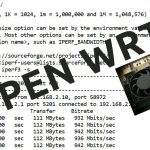Cool Cisco Certification exam Debug Tricks – Syslog & AS Number
Cool Cisco Certification exam Debug Tricks – Syslog & AS Number
If you are studying for a Cisco certification exam, odds are that you work in lab-type situations frequently. Maybe you use GNS3 or even one of the Virtual Lab solutions offered on the Cisco website. If that is the case, I have a couple of cool tricks to share with you.
One of them is related to syslog traffic. If you are not inclined to create an actual syslog server inside your virtual environment, but you still want to verify that syslog messages are being sent and received, try this process on one of your routers (the one you want to be your ‘fake’ syslog server).
First, create an extended access-list to match syslog traffic:
(config)# ip access-list extended 101
(config-ext-nacl)# permit udp any host 10.250.250.2 eq syslog
(The ip address 10.250.250.2 is assigned to a Loopback interface on the syslog-receiving router.)
Now create a debug command to watch for traffic matching that access-list:
# debug ip packet 101
Now if you go to another device in your virtual network (or real one too, this works either way) and configure it to send syslog messages to 10.250.250.2, you will see that traffic happens on the receiving device. Here’s a sample of output you can expect to see:
We are not really concerned here about deciphering the content, we just want to verify that syslog messages are being sent and received. The above output shows that we have succeeded!
A second cool trick is one for which I have been hunting myself for a while. I wanted to know how a person could retrieve the Autonomous System (AS) number in use if I wasn’t ‘in the know.’ For instance, I am on a router which is in the network, but on which the EIGRP routing protocol has not been configured. In this case, how can I determine the AS number in use? This is a trivial matter if my router IS running EIGRP and is already configured with the correct AS number. show ip eigrp topology will return the results I seek. Here is some sample output from that command:
The AS number is clearly evident. But when I am not configured, what can I do? I presented this challenge in a recent class and a student named Cara returned the next day with the following suggestion (she did not claim credit; she said someone told her, but I still appreciated her sharing).
First, create an extended access list to identify what you wish to observe. As EIGRP uses the multicast address of 224.0.0.10 to communicate, let’s latch on to that:
(config)# ip access-list extended 102
(config-ext-nacl)#permit ip any host 224.0.0.10
That’s all we need. Now we need to debug with the ‘dump’ keyword to push the raw data to the screen:
# debug ip packet detail 102 dump
Here is some sample output:
What we want to focus on here is the fifth hex chunk AFTER the E000000A. We can see above that the fifth chunk is hex 64. Some quick arithmetic will reveal that this is decimal value 100. Voila! There it is! The AS number in use is 100. That is so cool.
Now I have searched the net for that little gem, but I didn’t find that information until after Cara shared with me. But it is out there; apparently I need to refine my search engine skills even further. It must be a question of knowing what questions to ask. (Isn’t it always?!) Oh well, I am happy that I can sleep now that this persistent gnawing at my brain has been put to rest.
If you have any cool debug tricks you would like to share, I would love to hear about them!
Enjoy,
Mark Jacob
Cisco Instructor – Interface Technical Training
Phoenix, AZ
You May Also Like
A Simple Introduction to Cisco CML2
0 3901 0Mark Jacob, Cisco Instructor, presents an introduction to Cisco Modeling Labs 2.0 or CML2.0, an upgrade to Cisco’s VIRL Personal Edition. Mark demonstrates Terminal Emulator access to console, as well as console access from within the CML2.0 product. Hello, I’m Mark Jacob, a Cisco Instructor and Network Instructor at Interface Technical Training. I’ve been using … Continue reading A Simple Introduction to Cisco CML2
Creating Dynamic DNS in Network Environments
0 645 1This content is from our CompTIA Network + Video Certification Training Course. Start training today! In this video, CompTIA Network + instructor Rick Trader teaches how to create Dynamic DNS zones in Network Environments. Video Transcription: Now that we’ve installed DNS, we’ve created our DNS zones, the next step is now, how do we produce those … Continue reading Creating Dynamic DNS in Network Environments
Cable Testers and How to Use them in Network Environments
0 731 1This content is from our CompTIA Network + Video Certification Training Course. Start training today! In this video, CompTIA Network + instructor Rick Trader demonstrates how to use cable testers in network environments. Let’s look at some tools that we can use to test our different cables in our environment. Cable Testers Properly Wired Connectivity … Continue reading Cable Testers and How to Use them in Network Environments








See what people are saying...